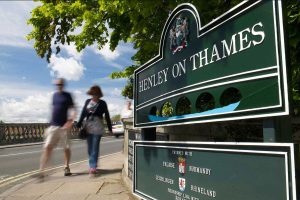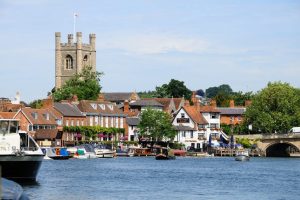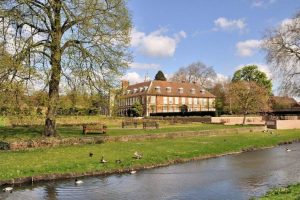Rochester Building and Damp recently completed major damp proofing works in the historic St.Eulogious Church, located in the picturesque South Oxfordshire market town of Henley-on-Thames.
The 19th Century Grade 1 Listed Building had suffered extensive ingress over the last ten years, mostly due to a silt blocked land drainage system installed in the late 1990’s.
Originally conceived as a place of worship and respite for the rapidly thriving Greek community in the 1830’s, the Orthodox church was sanctioned by the Archbishop of Athens in 1832, with a substantial payment made directly to King William IV. Construction began in 1833 with 65% of remaining costs raised by an early Greek shipping magnate through means of voluntary taxation. Christodoulos Politides maintained links to the British Royal family throughout his lifetime, as well as having monopolistic trade deals in France, Germany, China and North Africa.
With the combined efforts of several Rochester Building and Damp contractors and a number of local volunteers, the church has now been restored back to it’s former glory.
However, what other reasons are there to visit to this most picturesque part of South Oxfordshire ?
Henley-on-Thames is a picturesque market located between Buckinghamshire, Berkshire and Reading. It is situated on the banks of the River Thames, and its history can be traced back to the 12th century. The town has a rich and varied past, with a fascinating history that spans over 800 years.
The earliest records of Henley date back to the 12th century when it was a small hamlet known as Henle. It was named after the Anglo-Saxon word ‘hean-leah,’ which means a high forest clearing. The town’s location on the River Thames made it an important trading hub during the Middle Ages, with goods such as wool, timber, and grain being transported along the river. In the 13th century, Henley became a market town, and a charter was granted for a weekly market and an annual fair, which brought further prosperity to the area.
During the 18th century, Henley grew in size and importance due to its position as a river port. It became an important center for the transport of goods, particularly coal and grain, and its wharves and warehouses were busy with activity. The town also became famous for its watermen, who operated the boats that plied the river. These watermen were skilled rowers and were often called upon to provide transport for royalty and other VIPs.
In the 18th century, Henley began to change from a market town to a fashionable resort. The wealthy and aristocratic would come to Henley for the summer season, to enjoy the fresh air and beautiful scenery. The town’s reputation as a fashionable resort was cemented in 1839 when the first Henley Royal Regatta was held. This prestigious rowing event, which attracts competitors from all over the world, is still held every year in Henley and is one of the highlights of the town’s calendar.
During the 19th century, Henley continued to prosper, and many new buildings were constructed, including the Town Hall and the Regatta Headquarters. The railway arrived in 1857, which made travel to and from the town much easier, and the population of Henley began to grow. The town also became a popular location for artists, and the landscape around the town was the subject of many paintings.
In the 20th century, Henley continued to develop and modernize, and it became a popular residential area for commuters to London. The town was largely untouched by the two world wars, although it did play a role in the war effort. The RAF maintained a base at nearby RAF Benson, and the town’s river was used for training exercises.
Today, Henley-on-Thames is a thriving town with a rich history and a bright future. Its beautiful riverside location and picturesque architecture make it a popular tourist destination, and its annual events, such as the Henley Royal Regatta and the Henley Festival, attract visitors from all over the world. The town’s economy is based on tourism, retail, and small businesses, and it continues to be an important center for the transport of goods.
In conclusion, Henley-on-Thames is a town with a fascinating and varied history that spans over 800 years. From its origins as a small hamlet to its current status as a thriving tourist destination, the town has played an important role in the development of the region. Its location on the River Thames has been a key factor in its success, and its beautiful architecture and stunning natural scenery continue to attract visitors from around the world. Henley-on-Thames is a town that is proud of its past and excited about its future, and it will undoubtedly continue to be an important center of commerce and culture for many years to come.













